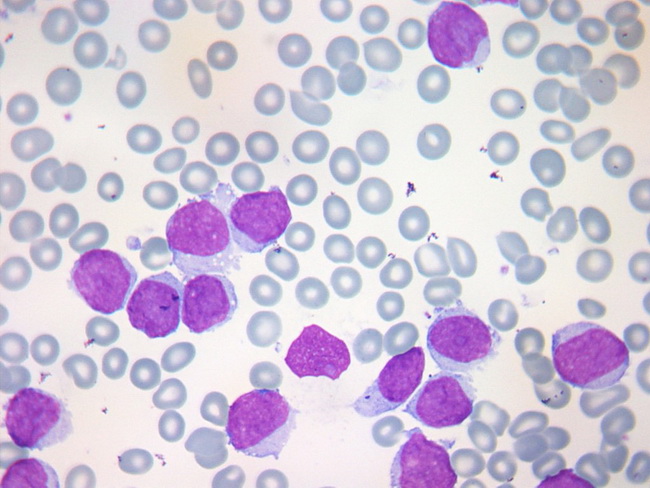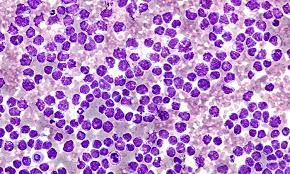Mantle zone cells in the lymph nodes are the source of the rare, aggressive non-Hodgkin lymphoma known as mantle cell lymphoma (MCL).” Approximately 6% of non-Hodgkin lymphoma cases in the US. are mantle cell lymphomas.
For more information, keep reading.
Table of Contents
What Is Mantle Cell Lymphoma?
White blood cells, which aid in the body’s ability to fight infections, are affected by the cancer mantle cell lymphoma.
The term “non-Hodgkin’s lymphoma” may be used by your doctor to describe your illness.” These are malignancies that affect lymphocytes, a particular kind of white blood cell.
Your lymph nodes, the pea-sized glands in your neck, groin, armpits, and other locations that are a part of your immune system, contain lymphocytes.
Some of your lymphocytes, known as “B-cell” lymphocytes, develop into cancer cells if you have mantle cell lymphoma. This indicates that they proliferate rapidly and unchecked.
Your lymph nodes become tumor-producing sites for these cancerous cells. They may enter your blood or lymph channels and spread to other lymph nodes, your digestive tract, spleen, liver, and bone marrow (the soft region where blood cells are made).
Frequently, by the time you receive a diagnosis, mantle cell lymphoma has spread to other areas of your body. Researchers are looking for new treatments that can help you live longer with better quality of life
Symptoms of Mantle Cell Lymphoma
During the initial stages of the illness, mantle cell lymphoma may not show any symptoms. When symptoms appear, they may include:
- Lymph node swelling
- Persistent, usually painless, swelling of certain lymph nodes, especially lymph nodes within the neck and throat region
- Enlargement of other lymph nodes, such as nodes at the elbows or shoulders, under the arms, in the chest, abdominal, and/or pelvic regions
- Digestive symptoms
- Loss of appetite
- Nausea
- Vomiting
- Indigestion
- A feeling of fullness
- Abdominal swelling (distension) or bloating
- Abdominal pain or discomfort
- Generalized symptoms (B symptoms)
- Persistent or repeated fever
- Unexplained weight loss
- Sweating, particularly at night (night sweats)
- If MCL has spread to involve the bone marrow it may cause anemia
- Fatigue
- Listlessness and lack of energy
- Pale skin (pallor)
- Headaches
- Susceptibility to certain infections
- Easy bruising and excessive bleeding
- Involvement of the digestive tract which may be associated with the development of multiple polyps within the intestines
- In rare cases, MCL may spread to involve the brain and spinal cord resulting in neurologic signs
- Lethargy
- Headaches
- Weakness
- Confusion
- Personality changes
- Seizures
Mantle Cell Lymphoma: What Causes It?
Mantle cell lymphoma’s exact cause is unknown, but a number of things may play a role in how it manifests.
- Genetic abnormalities
- Immunologic abnormalities
- Environmental factors
- Exposure to ultraviolet rays
- Certain chemicals
- Ionizing radiation (carcinogens)
- Certain viral infections
- Diet
- Stress
Investigations are being conducted into additional potential causes, such as:
- Family history
- Inflammation
- Infection

Get A Diagnosis
Your doctor will conduct a physical examination and may query you about things like:
- Have you recently lost weight?
- Do you not seem as hungry as usual?
- Have you noticed any swelling in your neck, armpits, groin, or anywhere else on your body?
- Do you experience unusual fatigue?
Mantle cell lymphoma can be identified by a number of tests, which your doctor may order:
Blood tests. Your doctor sends a sample of your blood to a lab for analysis. Blood tests can measure your blood cell count, kidney and liver function, and whether or not you have certain blood proteins that could indicate mantle cell lymphoma.
Biopsy. A lymph node tissue sample may need to be examined by your doctor. They’ll either remove the entire lymph node or a portion of it to accomplish that.
Your neck, armpits, and groin contain lymph nodes that are in close proximity to your skin. Your skin will be made numb by your doctor. The lymph node will then be sampled after a quick cut is made. You typically don’t need to spend the night in the hospital because it is an outpatient procedure.
To determine whether the sample contains cancer cells, experts will examine it under a microscope. Additionally, they examine the tissue for cell mutations and other indications of mantle cell lymphoma.
In order to determine whether the cancer has spread, your doctor may also take bone marrow samples from your bone of the hip. A shot that numbs the area is administered as you lay down on a table. The small amount of liquid bone marrow is then extracted by your doctor using a needle. To check for cancer cells, they will examine the sample under a microscope.
To check for tumors throughout your body, your doctor might recommend imaging tests. These may include:
CT scan. It is a potent X-ray that produces finely detailed images of the interior of your body.
PET scan. To look for cancerous signs, this test makes use of a small amount of radioactive material.
Colonoscopy. Your doctor will insert a tiny, illuminated tube into your rectum to perform this procedure, which involves looking inside your colon. You feel no pain because you are not awake for this test. The colon, also known as the large intestine, is where mantle cell lymphoma frequently spreads.
These examinations enable medical professionals to “stage” mantle cell lymphoma in addition to aiding in diagnosis. The cancer’s stage tells us how quickly it is growing and how far it has already spread. See more about Can You Survive With One Lung?
Treatment
The majority of people with mantle cell lymphoma start their treatments as soon as their cancer has been diagnosed and staged. However, doctors may advise “watchful waiting” for a small number of patients who are otherwise healthy, have no symptoms, and have a slow-growing form of the cancer.” Your doctor will carefully monitor your health throughout this period. You might, for instance, see your doctor every two to three months and schedule tests every three to six months. Your doctor might begin treatment if your lymph nodes start to enlarge or if you start to experience other symptoms.
Your therapy might involve:
Chemotherapy. To kill cancer cells, these medications employ various strategies. You can receive them orally or intravenously.
Immunotherapy. These medicines help your body’s immune system identify and eliminate cancer cells. Chemotherapy is frequently combined with it.
Targeted therapy. These drugs prevent cancer cells from surviving and proliferating by inhibiting proteins.
Stem cell transplant. Along with high-dose chemotherapy, your doctor might also recommend this procedure.
In your bone marrow, stem cells are present and assist in the production of new blood cells.
Stem cell transplants come in two different varieties. The stem cells used in “autologous” transplants originate from you, the patient, as opposed to a donor.
Your doctor will administer a growth factor drug during this type of transplant so that your stem cells can move from your bone marrow to your bloodstream. Your blood cells are taken by your doctor. They are occasionally frozen so they can be used later.
You may receive high doses of chemotherapy or radiation that may last for several days after your doctor removes your stem cells. You might experience unpleasant side effects, such as nausea and vomiting or sores in your mouth and throat. Drugs that provide some relief are available for you to take.
You might be prepared to start your stem cell transplant a few days after your chemotherapy is finished. The cells will be administered through an IV. During it, you won’t experience any pain and will be awake.
Your bone marrow may start producing new blood cells 8 to 14 days after the transplant. It’s possible that you’ll need to spend a few weeks in the hospital. Your doctor may prescribe antibiotics to prevent you from getting sick during this period because you run the risk of contracting an infection while your bone marrow returns to normal.
For several months after leaving the hospital, your chances of contracting an infection may still be higher.
The term “allogenic” refers to a different kind of stem cell transplant. Similar steps are taken, but in this case, a donor is used for the stem cells. The best chance for a good match is with a close relative, like a brother or sister, so that your body doesn’t reject the new stem cells or perceive them as an attack on your body.
Get your name added to a list of people who might be willing to donate to you if that doesn’t work. Sometimes, getting the right stem cells from someone who belongs to your racial or ethnic group will give you the best chance.
It’s normal to experience these emotions as you recover from a stem cell transplant. Your friends and family can be an excellent source of support. Sharing your concerns and fears with others is always beneficial. You can also speak to people who can relate to what you’re going through by joining a support group.
Take Care Of Yourself
Your mantle cell lymphoma treatment is likely to have side effects for you. The type of drugs you’re taking will affect them differently. Talk to your doctor about how your treatment is impacting you because many side effects can be lessened by medication.
Here are a few frequent negative effects of therapy:
- Fever or chills
- Fatigue
- Nausea and diarrhea
- Infection
- Skin reactions
- Hair loss
- Shortness of breath
- Tingling, burning, or numbness in your hands or feet
It can be difficult at times to control your mantle cell lymphoma. As much as possible, educate yourself on your illness so you can participate in decision-making with your healthcare team.
Reaching out to counselors, social workers, religious leaders, and cancer organizations that can offer guidance and support may also lead you to find reliable emotional sources.
The End
Mantle cell lymphoma (MCL) is a type of non-About 6% of NHL cases are Hodgkin’s lymphoma (NHL). Currently, there are only about 15,000 mantle cell lymphoma patients in the United States. The mantle region of the lymph nodes inspired its name.
Many thanks for reading.


